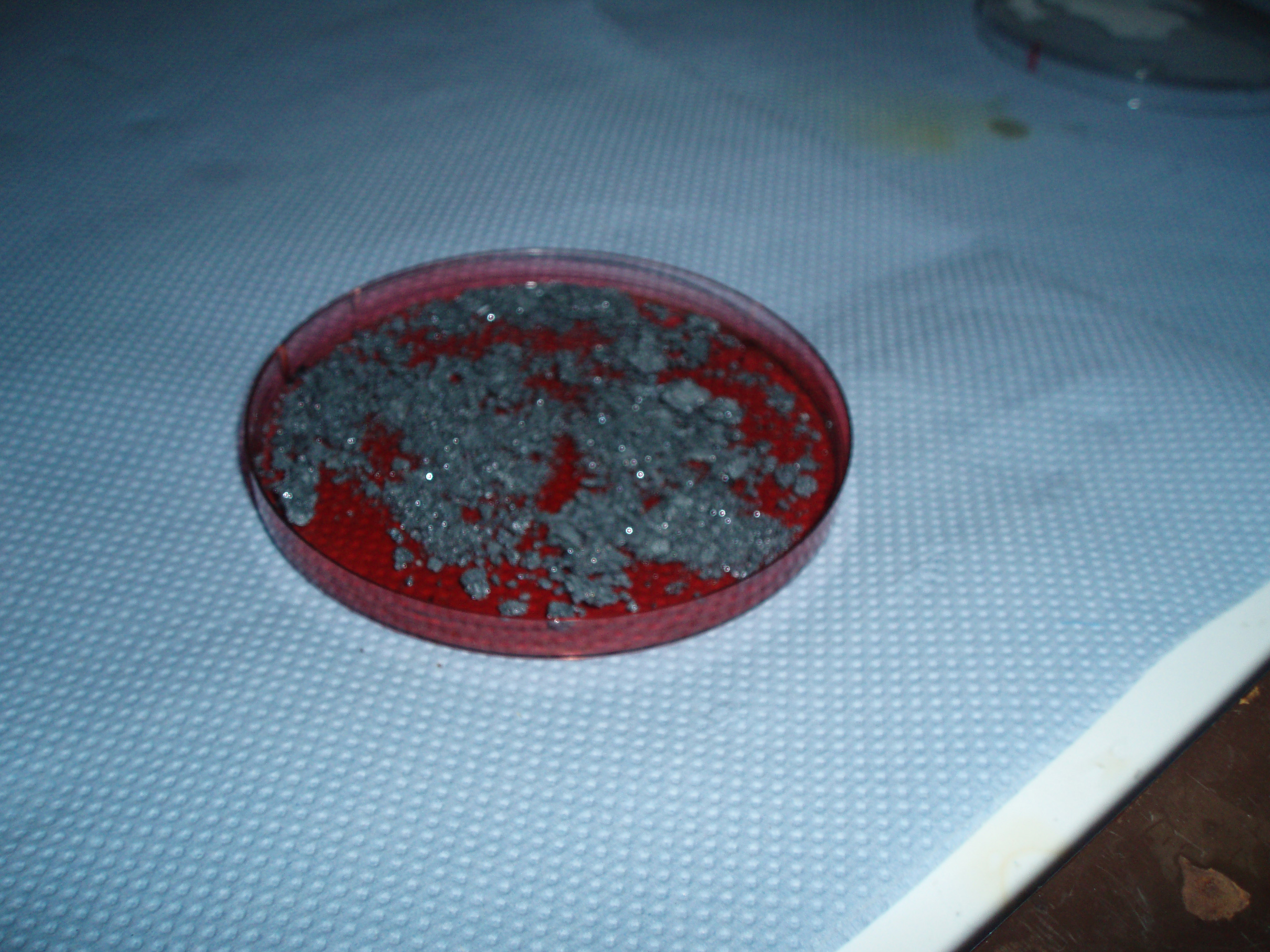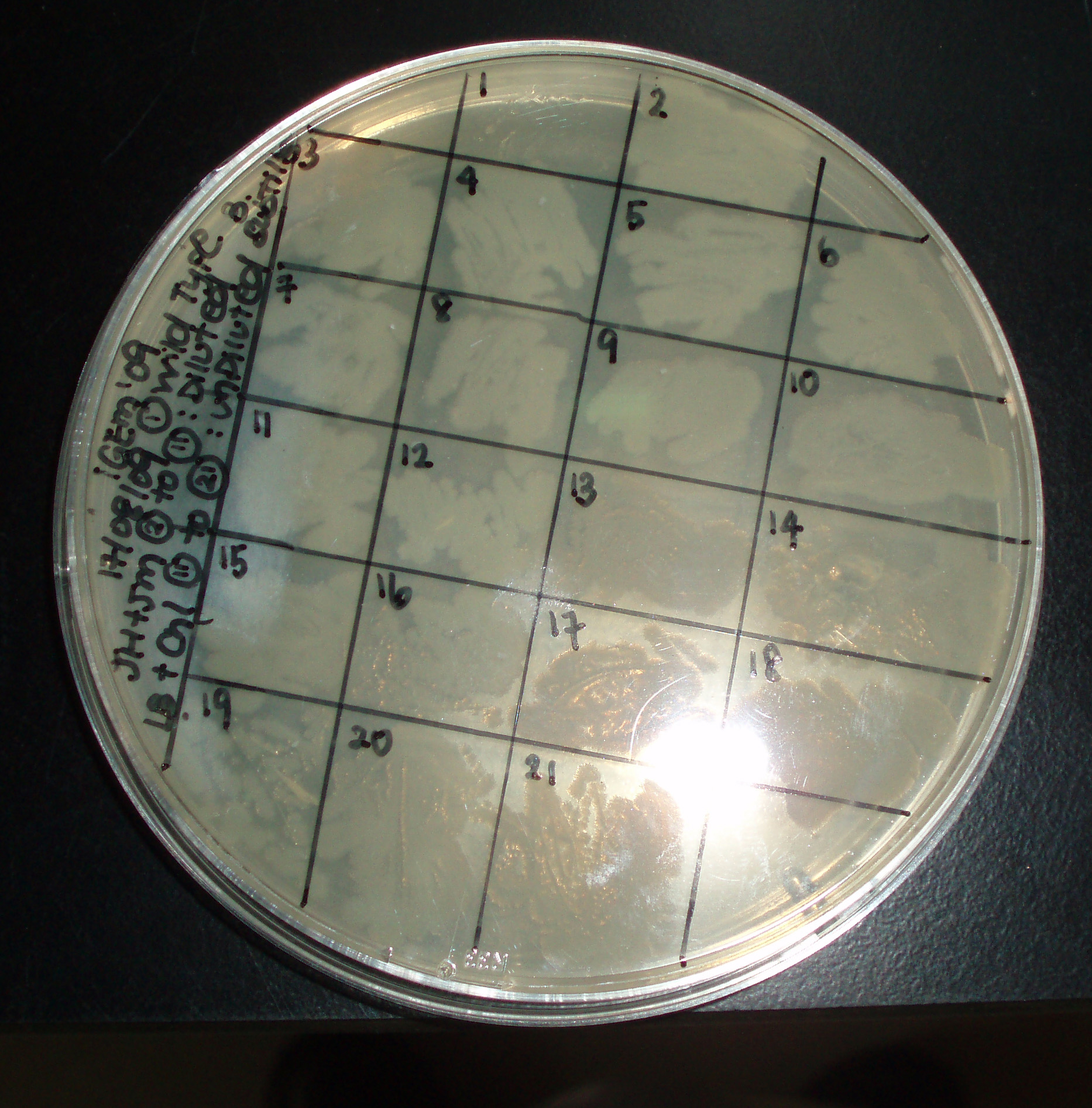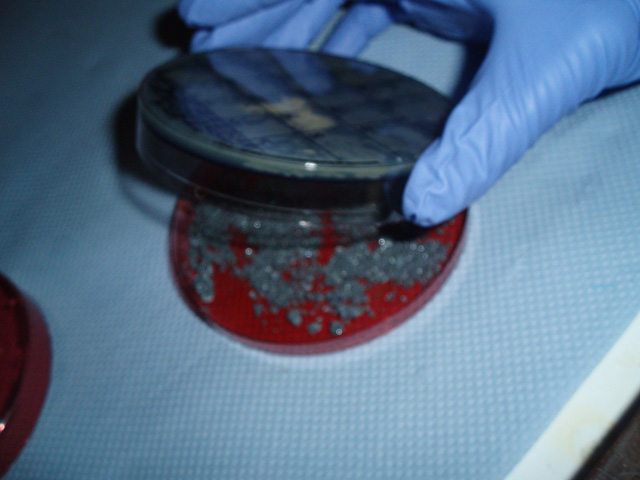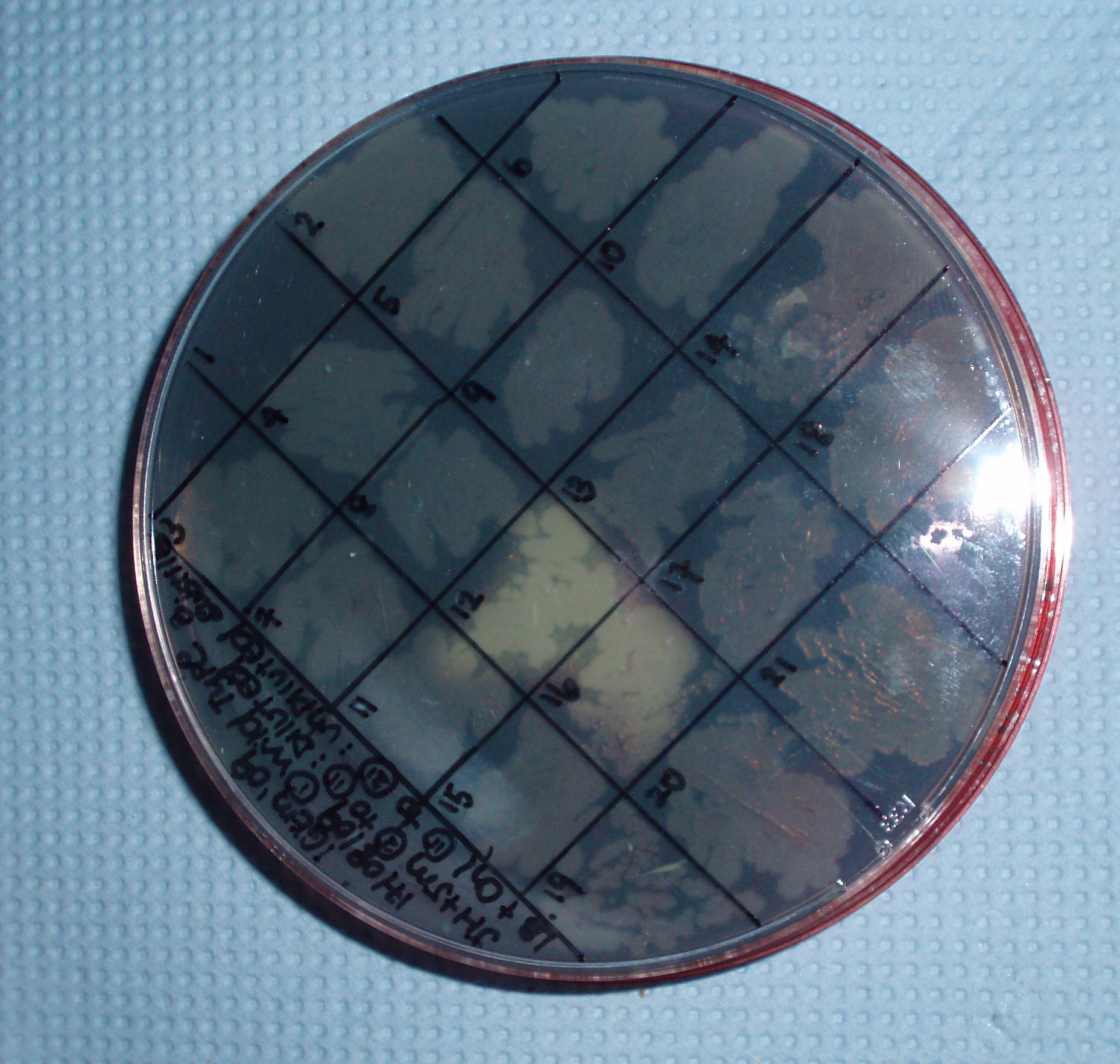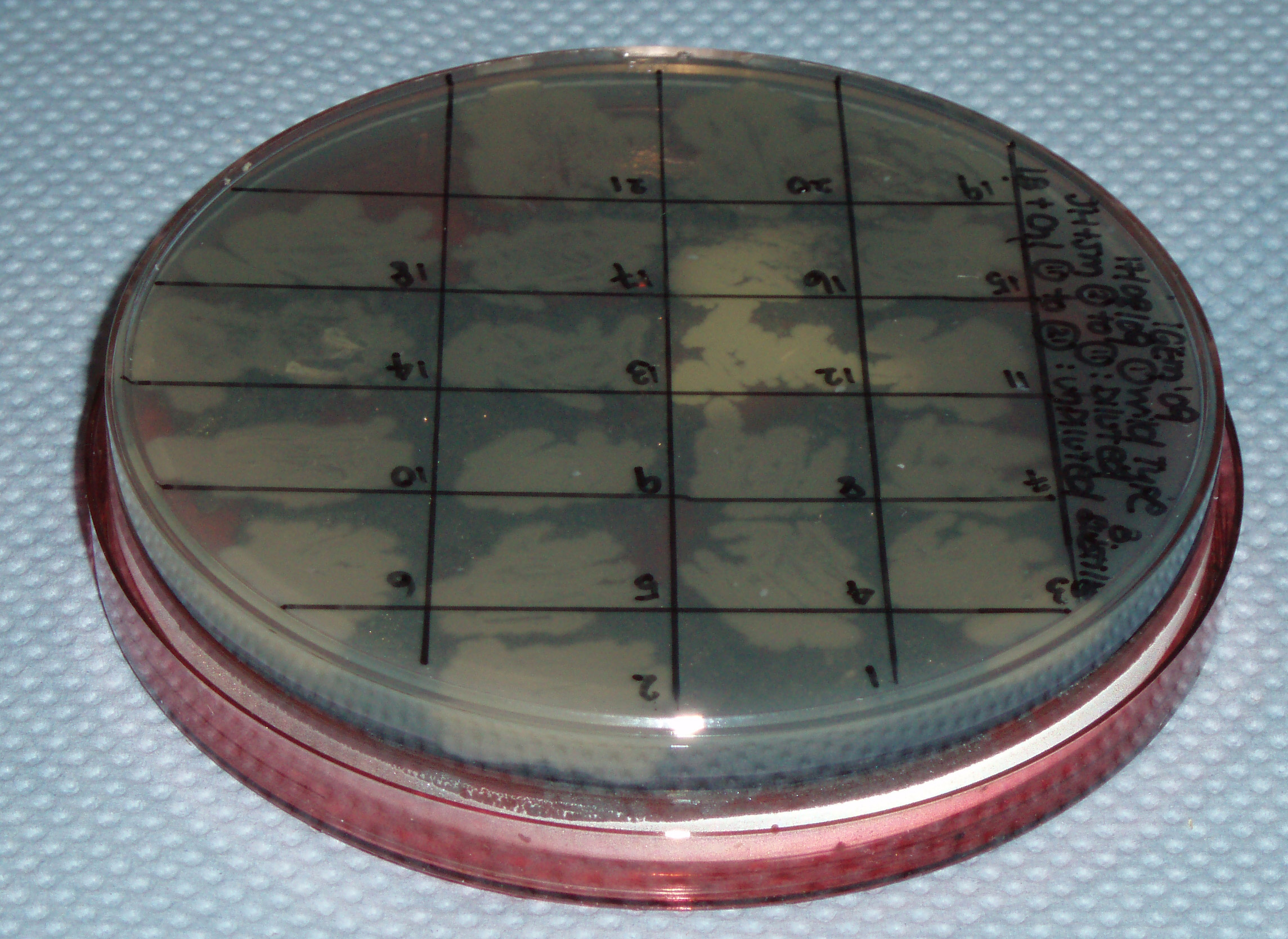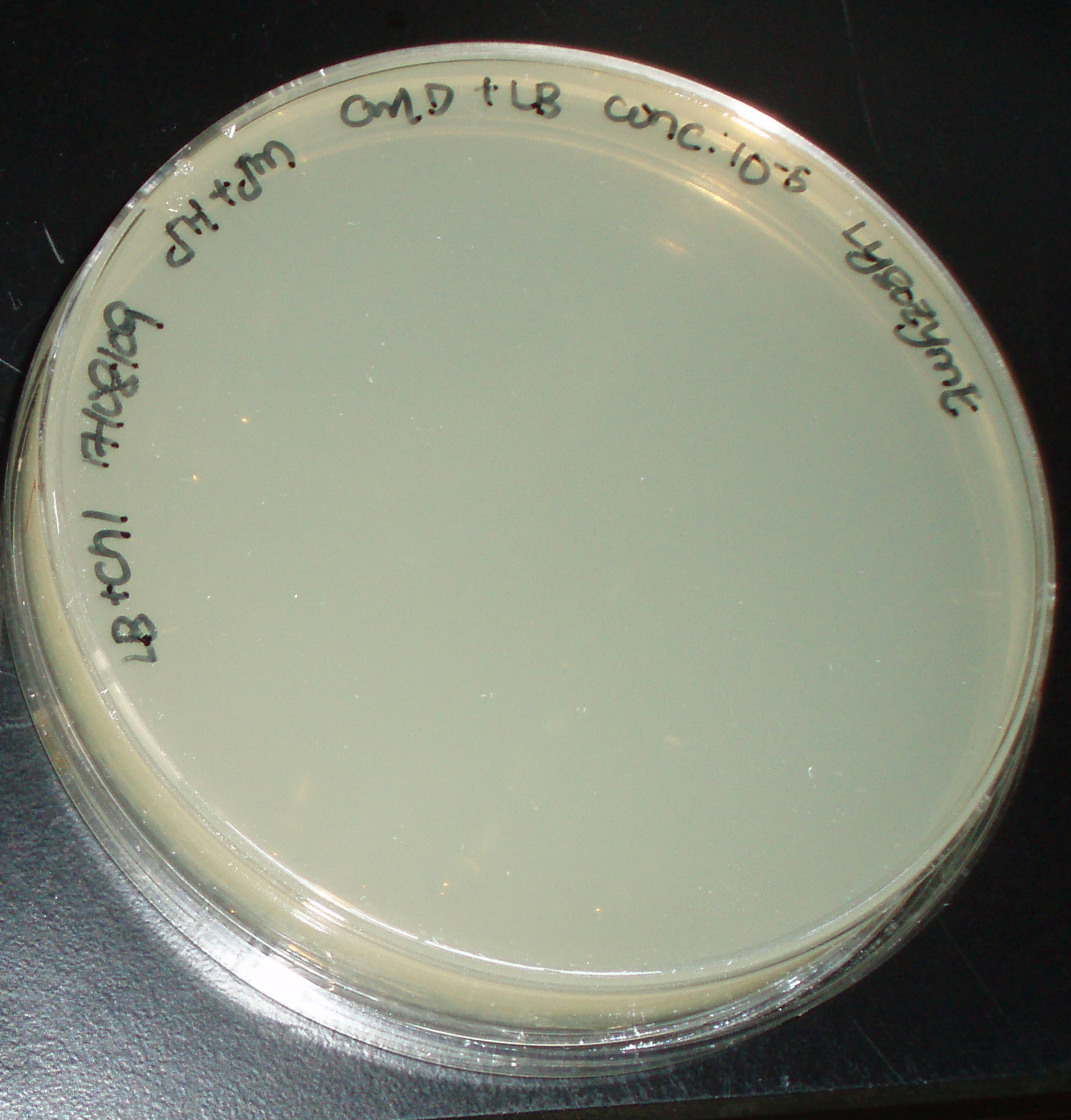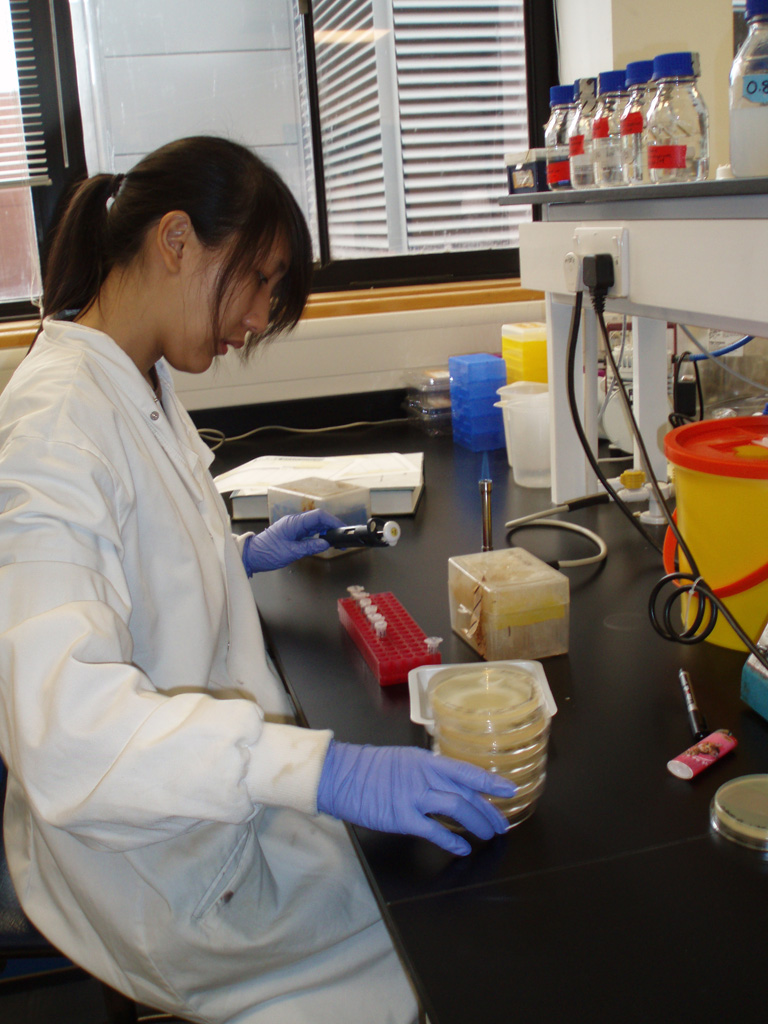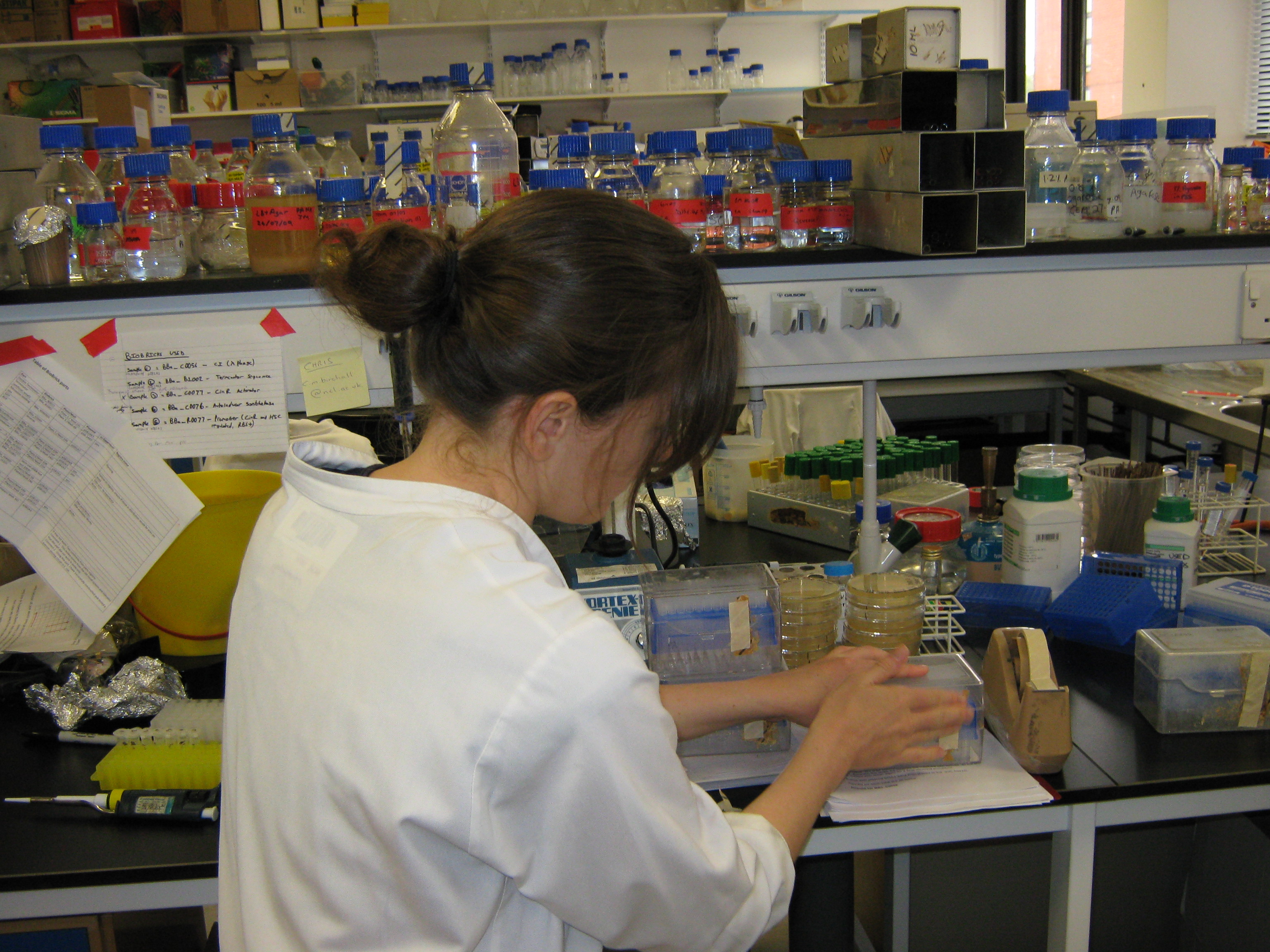Team:Newcastle/Labwork/18 August 2009
From 2009.igem.org
Contents |
Lab 18/08/09
Sporulation Tuning/ Chassis Team
Summary
Today, the moment of truth, the recovery of spores cwlD seemed to have worked judging from the results. A big sigh of relief from our team. Since it has been confirmed that the problem was that insufficient lysozyme stock solution was added, and that the current amount of lysozyme stock solution now works, we proceeded with the treatment for the recovery of spores sleB and cwlJ. The only and main difference is that the spores after treatment were plated out on plates with Kan and Em antibiotic.
We also did the iodine test which came back with relatively good results.
Lastly, we made up a new batch of LB solution for common use.
Results
Recovery of spores sleB and cwlJ
Metal Sensor Team
Introduction
So far, we have shown that our test transformation in Bacillus subtilis with pGFP-rrnb has worked; the plasmid has successfully integrated into the amyE gene of the Bacillus genome removing the bacteria’s ability to break down starch. Today, we need to transform some DH5α E.coli bacteria with a biobrick which we need for our metal sensing system. The BioBrick is called BBa_J33206 which is the Bacillus subtilis ars promoter and arsR gene plus E. coli lacZ and is carried on plasmid pSB1A2. Once we have prepared the BioBrick, we shall insert it into E.coli and grow the cultures on ampicillin plates.
As well as this, at some point in the near future we would also like to carry out a test PCR reaction on the genome of the Bacillus subtilis which will have the pGFP-rrnb plasmid integrated within it. Today we will need to set up the controls as well as the samples we intend to use in the test PCR.
Practical Outline
There are two tasks which need to be accomplished today:
- Transform some DH5α E.coli bacteria with BBa_J33206
- Rehydrate BBa_J33206 BioBrick
- Carry out heat shock transformation protocol
- Plate out cultures on ampicillin + LB plates
- Prepare samples and control for test PCR of B. subtilis genome containing pGFP-rrnb plasmid
- Grow overnights for 3 cultures extracted from plate containing wild type B. subtilis
- Grow overnights for 3 cultures extracted from plate containing B. subtilis + pGFP-rrnb.
- Keep plates containing wild type Bacillus subtilis and transformed Bacillus subtilis together in fridge.
Procedure
Transforming E.coli with BBa_J33206
Preparing the BioBrick
The BioBrick BBa_J33206 is found in the spring distributions in plate 1 and in well 9D. Following recommendations given on the Parts Registry website, 15µl of distilled sterile water was added. The mixture of water and dehydrated DNA was then mixed using the pipette before being placed into an Eppendorf tube. The Eppendorf tube was then transferred to the -20°C freezer.
Carrying out the transformation
To carry out the transformation of DH5α E.coli cells, Phil Aldridge’s protocol for heat shock transformation was used. All the steps were followed except for:
Step 5 – The cells were left in the ice for 15 minutes instead of the 30 minutes suggested on the protocol page. 15 minutes is actually sufficient time.
This is the summary of the steps for this transformation:
- The premade competent DH5α E.coli cells were transferred from the -80°C freezer and into an ice bucket. In the meantime, the water bath was switched on and set to 45°C.
- Once a quick vortex was given, 5µl of the BBa_J33206 BioBrick was added to the solution. The Eppendorf tube containing the cells was then placed in the ice bucket for 15 minutes.
- Once 30 minutes had elapsed, the tubes were introduced to the 45°C water bath for strictly 50 seconds before being returned to the ice for 2 minutes.
- 0.9ml of LB was then added to the Eppendorf tube and left to grow in the 37°C incubator for 60 minutes.
Plating out the ‘transformed’ bacteria
After the transformation steps had been accomplished, 200µl of the LB solution containing E.coli cells was then spread onto 1 plate containing LB + ampicillin. The plasmid to which the BioBrick BBa_J33206 is attached, the pSB1A2 plasmid, confers ampicillin resistance so a selection pressure of ampicillin should be applied. The plate was then labelled and stored in the 37°C incubator.
Preparing PCR reactions for Bacillus subtilis containing pGFP-rrnb
In order to prepare for the test PCR reactions (the date of which is decided by the arrival of the primers), samples have to be made ready. The samples which are intended for preparation are:
- 3 overnights for 3 cultures extracted from plate containing wild type B. subtilis
- 3 overnights for 3 cultures extracted from plate containing B. subtilis + pGFP-rrnb.
- 3 cultures (taken on the day) from plate containing wild type Bacillus subtilis
- 3 cultures (taken on the day) from plate containing Bacillus subtilis along with the integrated pGFP-rrnb insert.
- 1 x distilled water
Today, the overnight cultures were prepared by getting a total of six test-tubes out and labelled correctly. To all of the tubes, under aseptic conditions, 3ml LB was inserted. Into the first three tubes in the rack, 3 colonies from a plate containing wild type Bacillus subtilis were added and into the remaining three tubes, 3 colonies from the plate containing B. subtilis plus pGFP-rrnb (the plate which had 200µl of cells spread onto it) were added.
The two plates from which these colonies came from were then stored in the fridge for later use. The tubes were inserted into the orbital shaking incubator at 37°C for overnight growth.
Stochastic Switch Team
Summary
Today we discovered that the transfromations done on the 17th were done incorrectly and there was no growth on the plates we had prepared. We decided to redo the transfromations using the appropriate protocol. We were using the same bricks as Monday: R0062; R0079; C0161; C0179; J44000; C0178; C0062
We carried out the transformations into competent E.coli DH5alpha cells that had been frozen down into the -80 freezer, using the protocol from Phil's lab. We plated the final cultures out onto LB+Amp plates and, following the protocol, prayed.
News
Events
- 20 – 21 June 2009 - Europe workshop (London)
- 23 – 24 June 2009 - UK iGEM meetup (Edinburgh)
- 23 October Practice Presentation (Newcastle)
- 23 October T-shirts are ready
- 27 October Practice Presentation (Sunderland)
- 27 October Poster is ready
- 30 October – 2 November 2009 - Jamboree (Boston)
Social Net
 "
"

